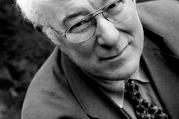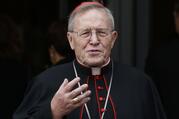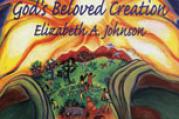Click here if you don’t see subscription options


Reasonable Expectations
While I found Bernard M. Daly’s article The Coming Synod of Bishops (4/2) interesting and challenging, it occurred to me that the synod of bishops he describes is not that set forth in Canons 342-48 of the Code of Canon Law. It is important, I think, that the synod of bishops, a sort of new institute since the Second Vatican Council, be clearly described so that its true functions can be understood and reasonable expectations be entertained for its work.
It seems to me that Bernard Daly might perhaps miss the mark when he appears to describe the synod of bishops as a mini-council. That it clearly is not. And it should be noted that it is a synod only by analogy with the synod as that institute has existed in church law.
The synod of bishops is to promote the close relationship between the Roman Pontiff and the bishops. These bishops, by their counsel, assist the Roman Pontiff in the defense and development of faith and morals and of the preservation and strengthening of ecclesiastical discipline. They also consider questions concerning the mission of the church in the world (No. 342). The function of the synod of bishops is to discuss the matters proposed to it and set forth recommendations. (No. 343).
(Most Rev.) Thomas G. Doran





Catholic Common Ground
I couldn’t agree more with John Dean’s letter (3/26) asking for intra-church dialogue and praising Cardinal Joseph Bernardin’s Catholic Common Ground Initiative. But I want to assure him and your readers that the Initiative is alive and well and that the committee, now headed by Archbishop Oscar H. Lipscomb, has been working diligently to foster the vision and to create opportunities for dialogue within our church.
Translating the vision into programs and getting visibility have been enormous challenges, but we now have published resources (two books, a set of videos and a quarterly newsletter) and regular activities. We have just finished our fifth annual conference (this time with young adult Catholics); we gathered leaders in liturgy for two small dialogues on worship space in November and January at Mundelein and Holy Cross College; a four-part dialogue on women in the church was held at the College of New Rochelle; and Cardinal Avery Dulles, S.J., will deliver our third annual lecture in Washington, D.C., in June. Anyone who would like to be on our mailing list and receive our free newsletter can contact Sr. Catherine M. Patten, R.S.H.M., coordinator of the initiative, at: The National Pastoral Life Center, 18 Bleecker St., New York, NY 10012; (212) 431-7825; e-mail: commonground@nplc.org.
(Rev. Msgr.) Philip J. Murnion



